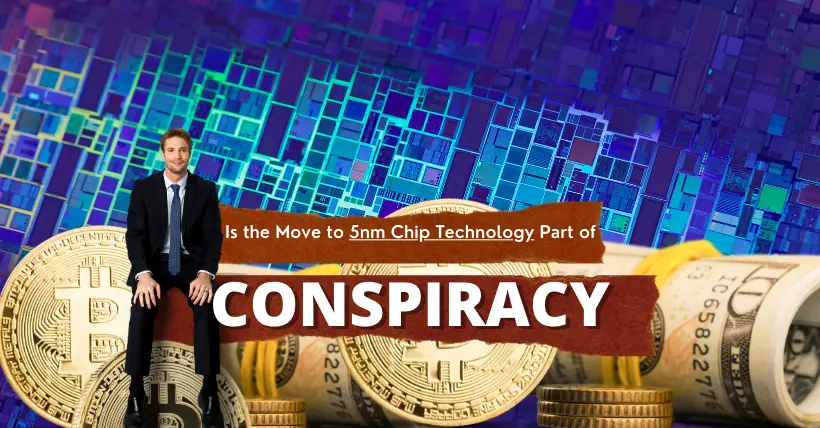Previously, many people believed that when chip technology reached 2nm, it would be approaching the limit of chip manufacturing, as technology cannot continue advancing indefinitely due to physical limits.
However, ASML later released a report projecting chip technology into 2039, stating that Moore’s Law is not dead and will continue to be valid. In 2025, it will reach 2nm, and by 2039, it will reach 0.2nm…
ASML also stated that 0.2nm is not the end, and further advancements will follow. To support the progress of chip technology, ASML will release more powerful photolithography machines.
At this point, one should realize the underlying reason for ASML’s push for advancing chip technology: it’s to sell their more powerful photolithography machines. Naturally, more powerful machines come at a higher price and generate higher profits.
Therefore, ASML cannot allow chip technology to stagnate; they must find ways to keep it progressing so they can sell their photolithography machines.
Other chip equipment manufacturers share the same goal: to advance chip technology and not let it stop, because if it halts, they won’t be able to sell their equipment. This is a clear strategy.
These equipment manufacturers’ constant push for advancing chip technology is also intended to force chip manufacturing companies to keep moving forward, as the interests of these manufacturing companies align with theirs.
Chip manufacturers are also pushing for advancements in chip technology to encourage chip design companies to adopt the new technology.
If chip technology were to stagnate, for example at 3nm, chip design companies would only use the 3nm process at most, and there wouldn’t be options like 2nm, 1nm, or 0.7nm.
The more advanced the chip technology, the less competition there is, and the higher the profits. Therefore, for wafer fabs, they would prefer chip technology to advance all the way to 0.00001nm. Even if the process is difficult to produce, they would still push for it.
Thus, many people believe that the continuous advancement of chip technology is actually part of a strategy by chip equipment and chip manufacturing companies to force downstream chip design companies to adopt new processes, ultimately benefiting them.
When chip design companies adopt these new processes, their costs rise, requiring them to increase prices, and they must convince consumers to use these products, resulting in a collective effort to “harvest” consumers.
In reality, for most chips, there’s no need for 3nm or 2nm; perhaps 7nm or 5nm would be sufficient, and there’s no need to go below 5nm.
Related:
- A Complete Overview of the Semiconductor Industry Chain
- Discover SIP Technology and Its Role in 16GB DDR4 Chips
- How Electroplating Supports Advanced Chip Packaging?
- SoC Alternatives: Chip Design and Integration Explained
- How Die Attach Ensures Chip Stability and Performance?
- How ASML Builds Its Billion-Dollar Lithography Machines?
- Deep Dive into Hot Spot Tech in Chip Failure Study
- CPU vs SoC vs MCU: Understand the Core Differences
- How to Become an Outstanding Chip Product Manager?
- Unlock the Success Formula for Chips in the AI Era Today
- HBM and Advanced Packaging: The Hidden AI Power Race
- AI Chip Innovations for Data Centers & Cloud in the Future
- IC Packaging Strategy That Balances Cost and Function
- Simple Guide to Understanding Chip Packaging Design
- TI New MCU: Just 1.38mm² but Packed with Power!
- Nvidia Mobile Chip Comeback: What to Expect in 2025
- Understanding How CPU Works Without a Start Location
- Arm Plans 300% Price Increase & Chip Development
- iPhone 16e Benchmark Shows 16% GPU Decline, Same CPU

Disclaimer:
- This channel does not make any representations or warranties regarding the availability, accuracy, timeliness, effectiveness, or completeness of any information posted. It hereby disclaims any liability or consequences arising from the use of the information.
- This channel is non-commercial and non-profit. The re-posted content does not signify endorsement of its views or responsibility for its authenticity. It does not intend to constitute any other guidance. This channel is not liable for any inaccuracies or errors in the re-posted or published information, directly or indirectly.
- Some data, materials, text, images, etc., used in this channel are sourced from the internet, and all reposts are duly credited to their sources. If you discover any work that infringes on your intellectual property rights or personal legal interests, please contact us, and we will promptly modify or remove it.



